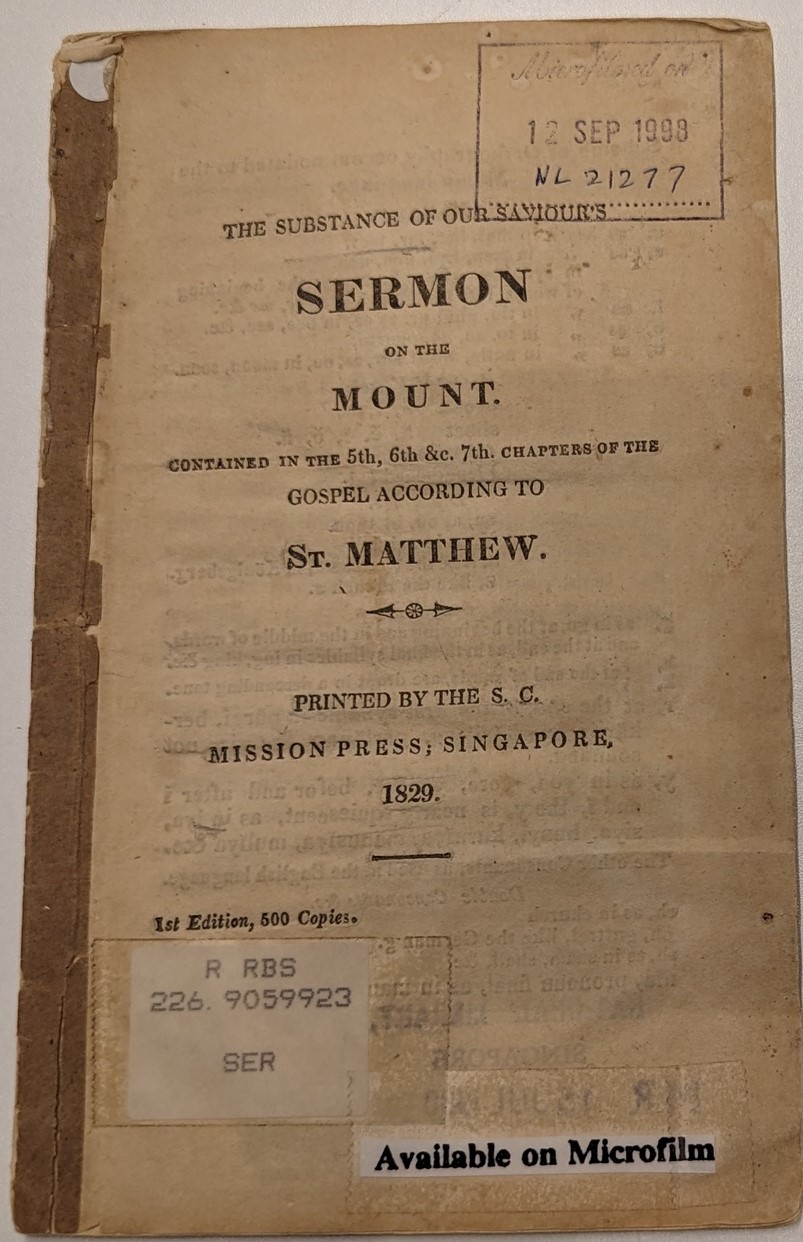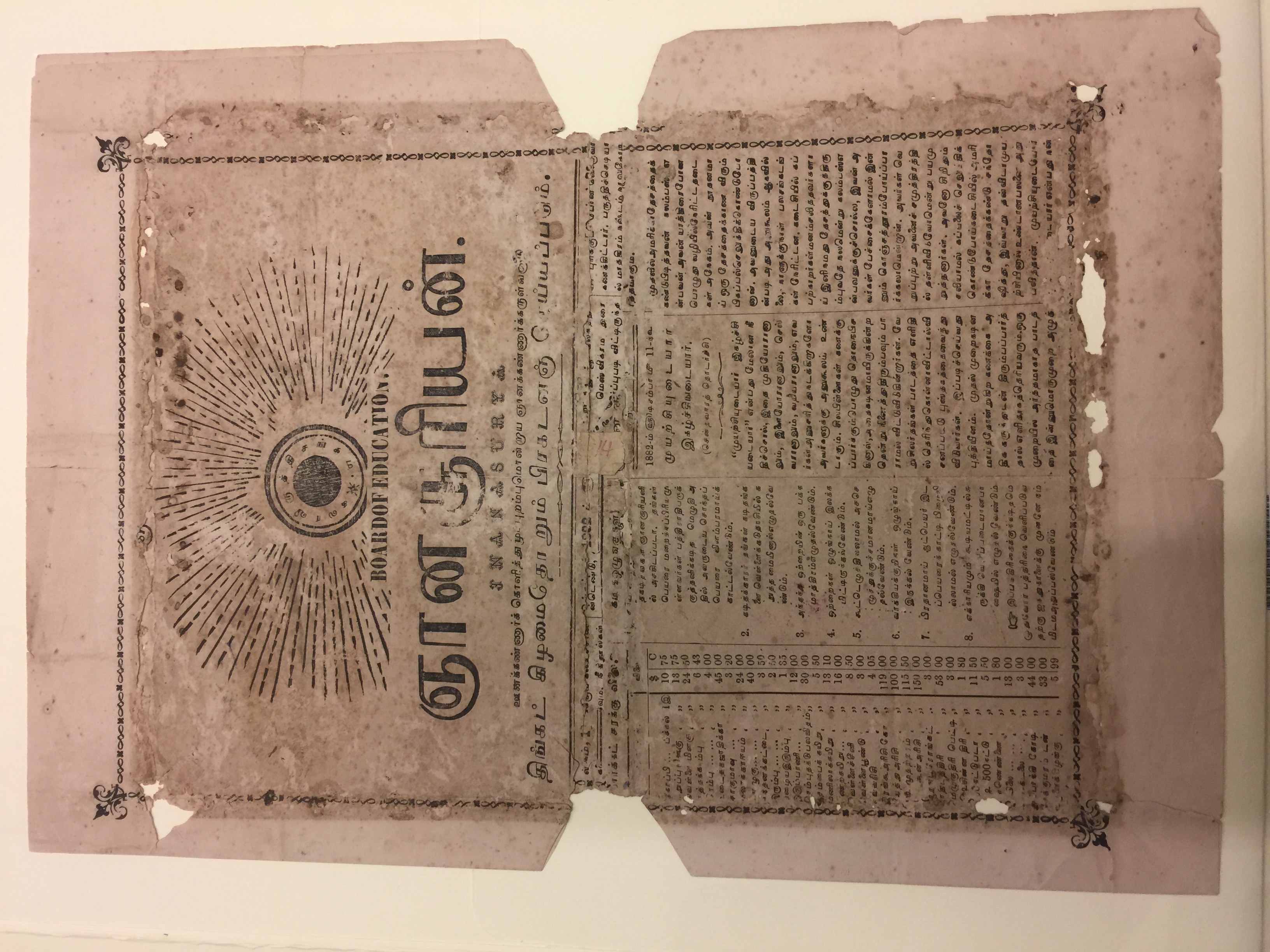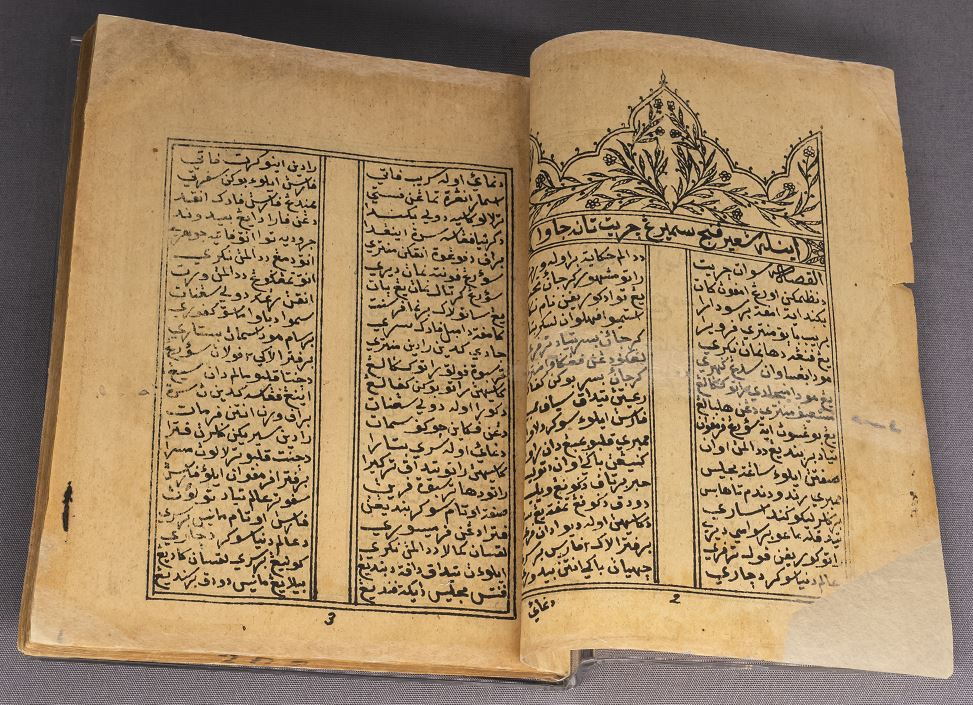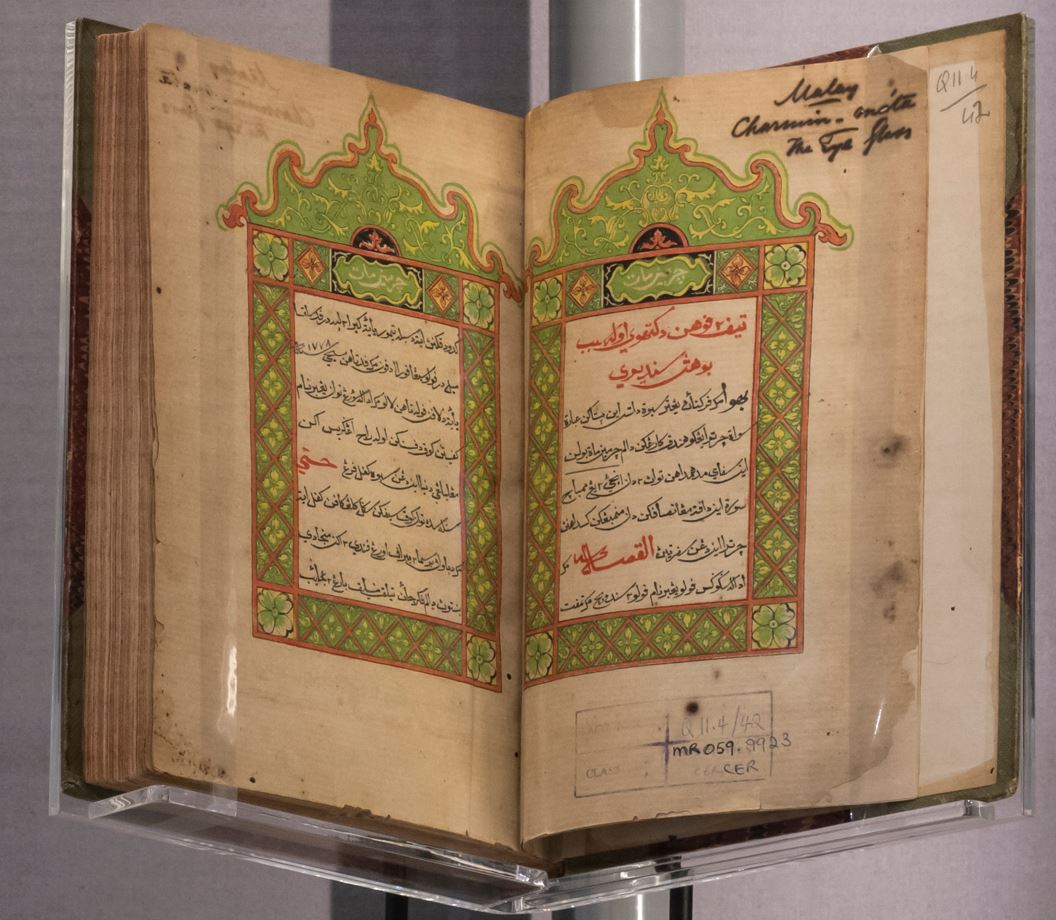Exhibition Highlights

The Substance of Our Saviour's Sermon on the Mount Contained in the 5th, 6th & c.7th Chapters of the Gospel According to St. Matthew
Singapore: Printed by the S. C. Mission Press, 1829
Collection of National Library, Singapore
This booklet, one of 500 copies printed in 1829, is the oldest item featured in the display. It is a Malay translation of the Sermon on the Mount, one of the most significant and well-known teachings of Jesus from the Gospel of Matthew in the Bible. The printing and distribution of religious literature in local languages was an important part of missionary work in the region. This title was likely translated by Danish missionary Claudius Henry Thomsen from the London Missionary Society, as he had translated the Gospel of Matthew in 1821 under the tutelage of his Malay teacher, Munshi Abdullah Abdul Kadir, in Melaka. Thomsen is credited for establishing the first printing press in Singapore, the Mission Press, in 1823.

ஞான சூரியன் [Gnana Sooriyan]
Edited by: மகுதூம் சாயபு (C. K. Makhdoom Sahib)
Singapore : Printed by Denodaya Venthira Press for Board of Education,
[1882– ]
Collection of National Library, Singapore
This was a weekly newspaper published every Monday by the Board of Education in 1882 and printed at the Denodaya Press owned by Makhdoom Sahib bin Ghulam Mukhyuddin Sahib, a Jawi Peranakan and a philanthropist. This four-paged sheet from December 11, 1882 is the only issue with the library and features content relating to political, commercial and general news, as well as opinion pieces on social reform.

Inilah Syaer Panji Semirang: Cerita Tanah Jawa
[c. 1886]
Collection of National Library, Singapore
This syair is based on the Panji tales from Java. Panji is the name of legendary Javanese prince who goes in search of his beloved, Princess Candra Kirana. A typical Panji tale contains many adventures, with both the hero and heroine adopting various disguises and new names. In this story, Candra Kirana disguises herself as a man named Panji Semirang. Originating from East Java probably around the 13th century, Panji tales have been translated into several Southeast Asian languages, thus influencing the oral and written traditions, as well as performing arts of the region. It has also been made into a movie. Commonly called Panji tales, they are a unique example of a local literary tale that has spread throughout Southeast Asia, with each country developing its own cultural version. This book of verse is based on the Malay translation of the Javanese tale and was originally re-written as hikayat, circa early 15th century.

Cermin Mata Bagi Segala Orang Yang Menuntut Pengetahuan [Eye Glass for All Who Seek Knowledge]
[1859]
Collection of National Library, Singapore
Cermin Mata is one of the first Malay journals to be published in Singapore, and among the earliest Malay works to be printed using lithography. It was compiled and printed by Reverend Benjamin Keasberry, most likely with the help of Munshi Abdullah bin Abdul Kadir. Cermin Mata was used as an educational material in missionary schools and contained a mixture of Christian tracts, general knowledge and original writings of Munshi Abdullah. Keasberry is known for advancing the use of lithography, which allowed the printing of text that resembled the flow of the handwritten script. His success influenced the local Malay commercial presses to adopt the new technology (which was less costly than typography), leading to a gradual transition from manuscript copying to printing.

